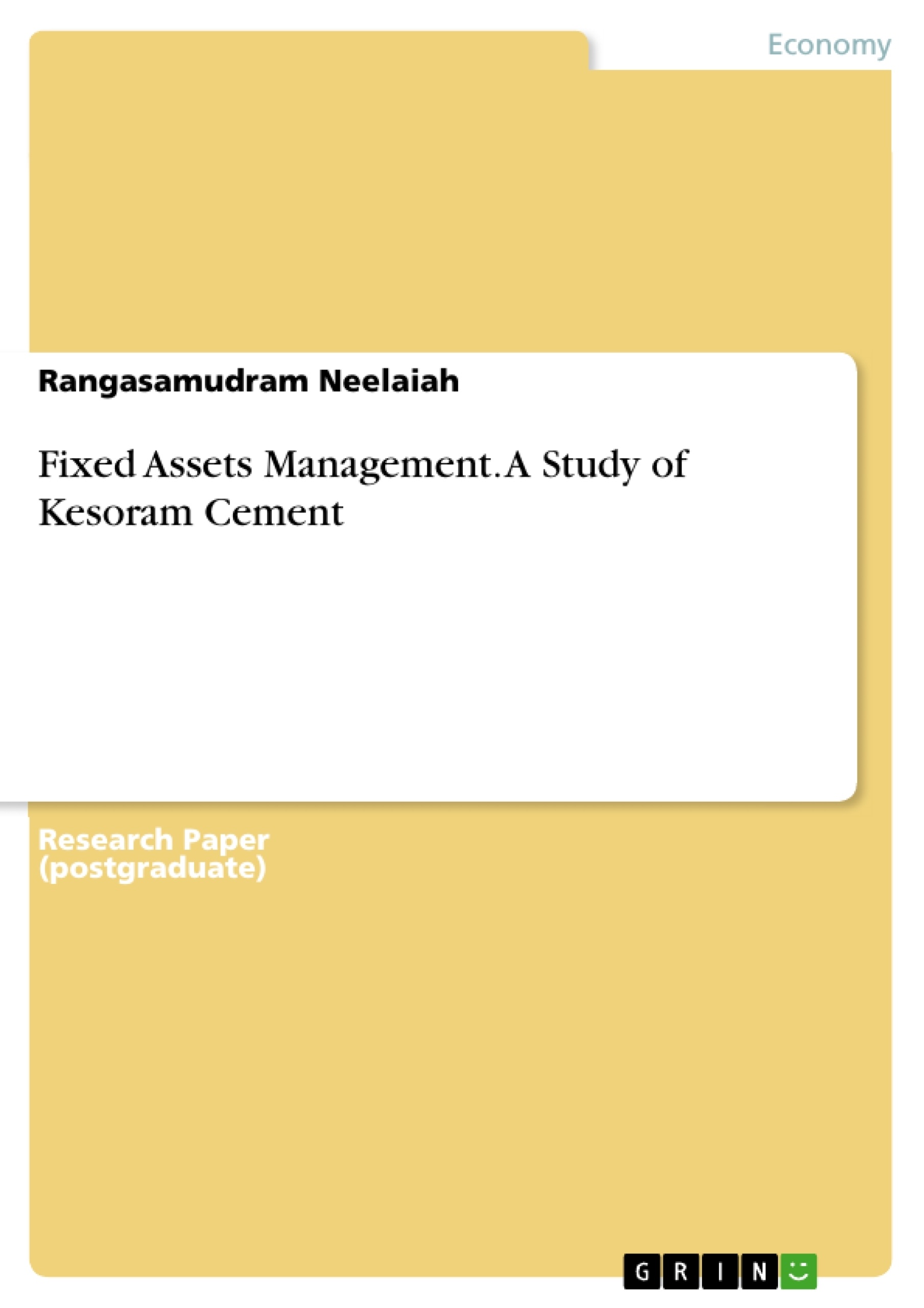The study assesse the amount of capital expenditure made by the company during the period of study 2010-11 to 2014-15. It is conducted to evaluate the fixed assets turnover of BIRLA SHAKTI CEMENT and to evaluate whether fixed assets are giving adequate returns to the company. It also assesses what portion of the fixed assets can be used to pay the owner's fund and long-term obligations in the event of liquidation. The data used for the analysis and interpretation is from annual reports of the company, that is, secondary forms of data. Ratio analysis is used for calculation purpose.
As fixed assets play an important role in company’s objectives. These fixed are not convertible or not liquidable over a period of time. The owner’s funds and long term liabilities are invested in fixed assets. If firms fixed assets are idle and not utilized properly it affects the long-term sustainability of the firm, which may affect liquidity and solvency and profitability positions of the company. Fixed assets are the assets which cannot be liquidated into cash within one year. The huge amounts of funds of the company are invested in these assets. Every year company invests an additional fund in these assets directly or indirectly. The survival and other objectives of the company depend on operating performance of management i.e. effective utilization of these assets.
Inhaltsverzeichnis (Table of Contents)
- INTRODUCTION
- PROFILE OF THE COMPANY
- RESEARCH DESIGN AND METHODOLOGY
- ANALYSIS AND INTERPRETATION OF DATA
- FINDINGS AND SUGGESSIONS
Zielsetzung und Themenschwerpunkte (Objectives and Key Themes)
This study aims to analyze the fixed assets management practices of Kesoram Cement, exploring the company’s strategies and challenges in this crucial aspect of operations. The study seeks to identify areas for improvement and offer recommendations for optimizing the company’s fixed assets management.
- Fixed asset management practices at Kesoram Cement
- The impact of fixed asset management on company performance
- Challenges and opportunities in fixed asset management
- Recommendations for improving fixed asset management practices
Zusammenfassung der Kapitel (Chapter Summaries)
- Chapter 1: Introduction This chapter provides a brief overview of fixed asset management and its importance in the context of a company's overall financial performance. It also introduces the study's objectives and research methodology.
- Chapter 2: Profile of the Company This chapter delves into the history, structure, and operations of Kesoram Cement. It examines the company's business model, its market position, and its key financial indicators.
- Chapter 3: Research Design and Methodology This chapter outlines the research methodology employed in the study, including the data collection methods, the sample size, and the statistical tools used for data analysis.
- Chapter 4: Analysis and Interpretation of Data This chapter presents the findings of the study, analyzing the collected data to reveal insights into the company's fixed asset management practices. It examines the efficiency of the company's asset utilization, its capital expenditure strategies, and its maintenance and disposal policies.
Schlüsselwörter (Keywords)
Fixed asset management, Kesoram Cement, company performance, financial analysis, asset utilization, capital expenditure, maintenance, disposal, recommendations.
- Quote paper
- Rangasamudram Neelaiah (Author), 2019, Fixed Assets Management. A Study of Kesoram Cement, Munich, GRIN Verlag, https://www.grin.com/document/1156334



